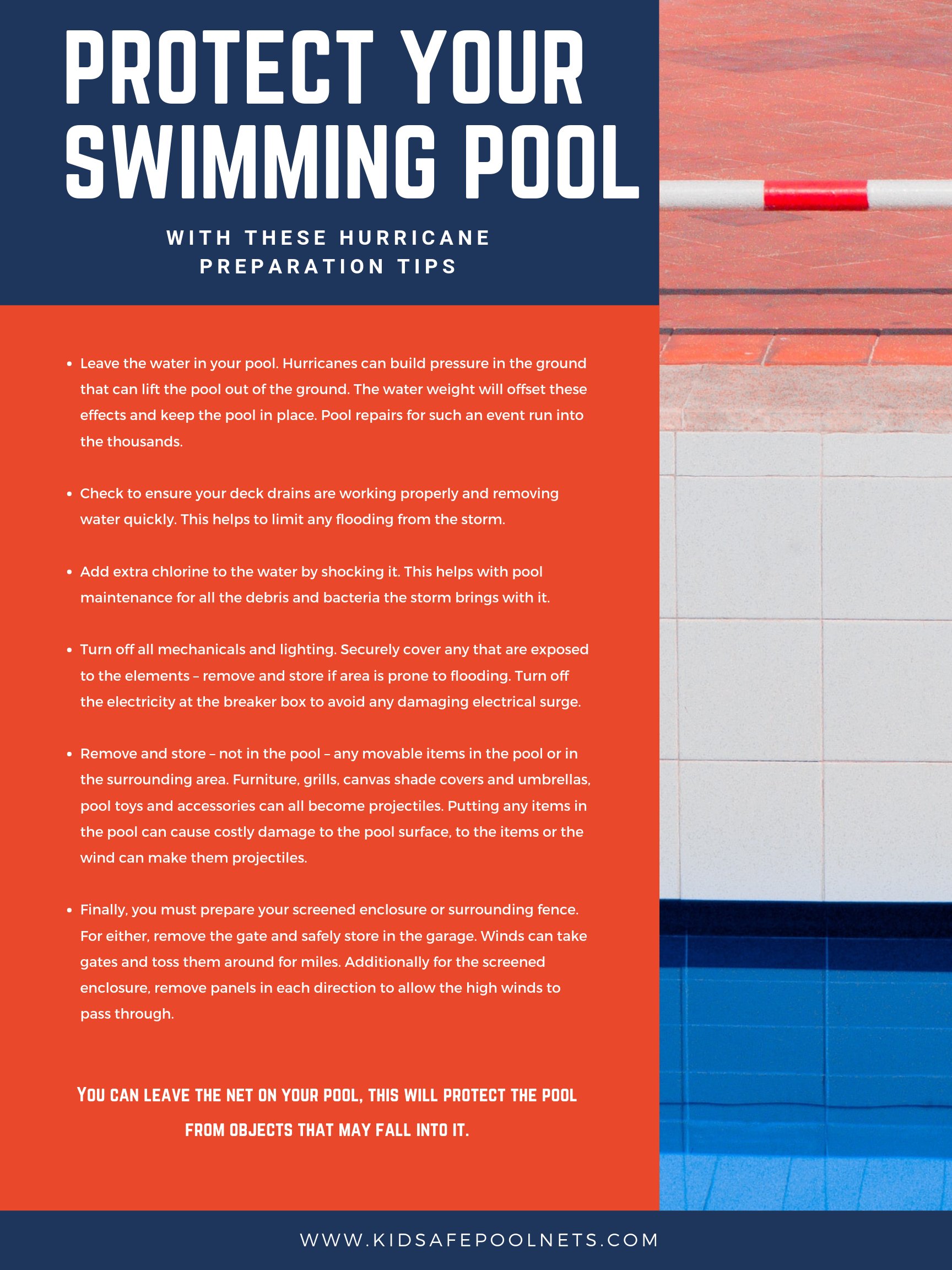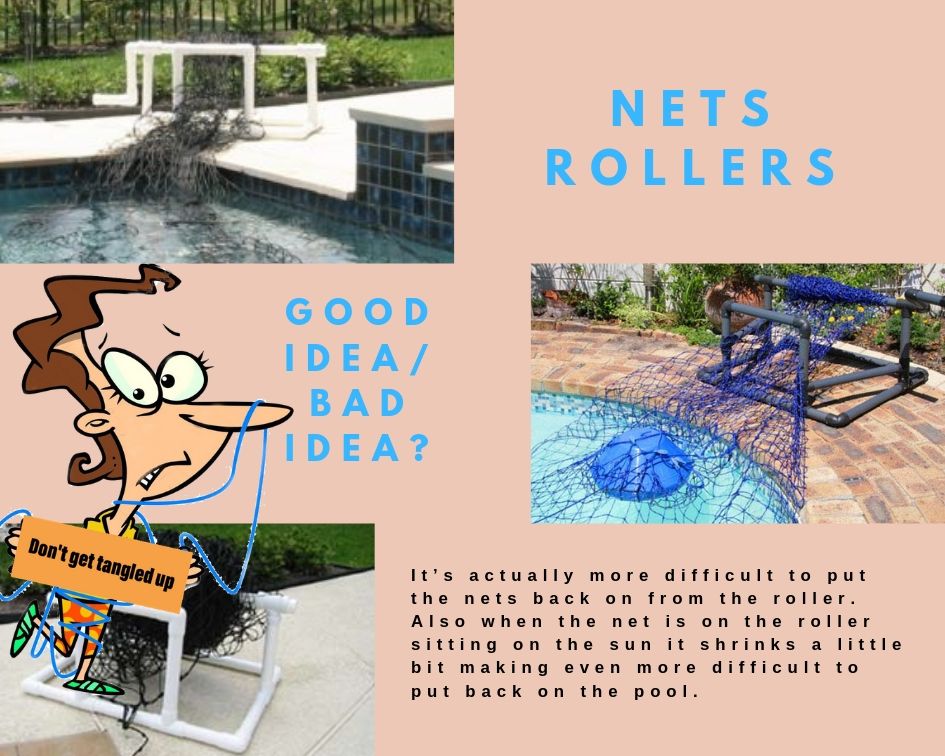
Net rollers
We no longer recommend the Storage rollers. It’s actually more difficult to put the nets back on from the roller. Also when the net is on the roller sitting on the sun it shrinks a little bit making even more difficult to put back on the pool.
We recommend you put a box that match with you furniture and keep it out of the sun.

AAP Updates Recommendations to Prevent Drowning in Children
Pediatricians are partnering with families who suffered a tragic loss of a child to inform drowning prevention campaign
ITASCA, Ill. – Drowning can be silent and quick, and it kills nearly 1,000 children every year. To refocus the attention of parents and physicians on one of the leading causes of death among children, the American Academy of Pediatrics is publishing updated recommendations on water safety.
“Drowning is the single leading cause of injury-related death among children ages 1 to 4,” said Sarah Denny, MD, FAAP, lead author of the policy statement, “Prevention of Drowning” published online March 15, 2019, in Pediatrics. “Many of these deaths occur when children are not expected to be swimming or when they have unanticipated access to water. Toddlers are naturally curious; that’s why we must implement other strategies, such as pool fencing and door locks.”
The second age group at highest risk of drowning deaths is teens, said Dr. Denny. Every year, about 370 children ages 10 to 19 drown. “Adolescents can be overconfident in their swimming abilities and are more likely to combine alcohol use with swimming – compounding their risk significantly. Children of color, especially African American teens are especially at risk.”
In the policy statement, the AAP lays out strategies to protect children at each stage of their life. New parents are advised to be vigilant at bath time and to empty all buckets and wading pools immediately. All children should learn to swim, and children and teens should wear life jackets while near open bodies of water. Teens can learn CPR and other water safety skills.
Injury prevention has long been a priority of pediatricians, and public health initiatives over the past 50 years have led to dramatic reductions in deaths from injuries related to motor vehicle crashes, sudden infant death syndrome, drowning, and other unintentional injuries. In the past few years, however, the rate of decline in these deaths has slowed.
Drowning remains the third leading cause of unintentional injury-related death among children ages 5-19 years. In 2017, nearly 1,000 children died from drowning and 8,700 visited a hospital emergency room because of a drowning event – with toddlers and teens at the highest risk.
The topic will be the subject of a panel presentation March 16, when leaders of the AAP will gather in Itasca, Ill., for an annual leadership conference. Family advocates, including Nicole and Jonathan Hughes, and Bode Miller, will share their experiences of losing a child to drowning. The panel will also include Sam Hanke, MD, FAAP, who lost his son to sudden infant death, and parent Greg Schell, chair of the AAP Family Partnerships Network. The panel will address recent trends in preventable child injuries, and how pediatricians can work with families to improve child health.
“We appreciate the chance to partner with these families, who have decided to channel their grief to help other parents prevent a similar tragedy. It is critically important for us to collaborate with families and communities to protect kids from drowning” said Ben Hoffman, MD, FAAP, Chair of the AAP Council on Injury, Violence & Poison Prevention. “Pediatricians should be talking about water safety routinely during well-child visits. But having families share their personal stories, we hope, will help connect with parents who may think it could ‘never happen’ to them. Tragically, it can happen to anyone.”
AAP will also publish new information for families on its website for parents,
HealthyChildren.org, including water safety advice based on children’s developmental stages, and recommendations on choosing a good learn-to-swim program.
“Research has found that swim lessons are beneficial for children starting around age 1, and may lower drowning rates”, said Linda Quan, MD, FAAP, a co-author of the policy statement.
“Learning to swim is a great family activity,” said Dr. Quan. “Families can talk with their pediatrician about whether their child is developmentally ready for swim lessons, and then look for a program that has experienced, well-trained instructors. Ideally, programs should teach ‘water competency’ too – the ability to get out of the water if your child ends up in the water unexpectedly.”
Even the best swim lessons cannot “drown-proof” a child, and so AAP strongly recommends parents take steps that make a child’s environment safer. For homes with a pool, the most important safety measure is a 4-sided fence that completely surrounds the pool and isolates if from the house.
AAP also recommends:
- Parents and caregivers should never leave children alone or in the care of another child while in or near bathtubs, pools, spas, or other open water.
- Adults should empty water from buckets and other containers immediately after use.
- Do not leave young children alone in the bathroom. Toilet locks can prevent drowning of toddlers.
- When infants or toddlers are in or around the water, a supervising adult with swimming skills should be within an arm’s length, providing constant “touch supervision.”
- Even with older children and better swimmers, the supervising adult should focus on the child and not be engaged with other distracting activities.
“Water is everywhere, and we need multiple layers to protect children from the deadly risks it poses,” said Dr. Quan. “As pediatricians, we cannot overlook this risk. Pediatricians can help by counseling families and working in their communities to improve safety, especially around pools, lakes and in boating communities.”
The American Academy of Pediatrics is an organization of 67,000 primary care pediatricians, pediatric medical subspecialists and pediatric surgical specialists dedicated to the health, safety and well-being of infants, children, adolescents and young adults. For more information, visit www.aap.org and follow us on Twitter @AmerAcadPeds
How does Kid Safe work?
Very simply. When in place, a Kid Safe Pool Net is stretched tight enough across a pool to suspend a baby above the water. When it comes time to remove it, the Central Tensioning System enables you to release the tension from the net before unhooking the anchors, allowing a quick and easy removal. This is also true for putting it back on – hook the net in place while it is loose, then pull in the tension ropes from the edge of your pool to re-set the tension. On a standard 15 x 30 pool, the average user takes about 4 minutes to completely remove the net and about 8 minutes to replace it (including the re-tensioning). An experienced user takes about 2 minutes off and 5 minutes on.

It’s hot outside. The water looks inviting: Just how safe is your Pool?
So where are your kids right now? Are you sure? Hopefully we know with some certainty. But there are always those times we do not know. Like when they are visiting with their friends. It is for these times that we need to make sure our kids are as aware of water safety as we are.

Water safety is not a single item, quick fix subject. Sure, there are many devices available to assist you with your backyard swimming pool, but true water safety should cover all types of water. Water Safety is a discipline that must be established for every household. This discipline can be taught to our kids as they grow up so they come to respect water as much as they enjoy playing in it. This discipline will be carried with them to their friend’s houses, beaches, lakes and canals where we are not in control of the safety devices available or the rules that govern use of the water.

Here are a few basic rules you could teach your kids’ as they are able to understand them.
- Never go into the water without an adult present. EVER. Not even for a second to retrieve something from the water. Make sure they know that you will never be angry with them if they ask you to assist them in retrieving something they have mistakenly dropped into the pool. Even if it is an item that shouldn’t be in the water. (The other side of this rule is for us parents: ALWAYS supervise children playing in or around water)
- Never dive headfirst into water. Enter the water feet first. We don’t always know how deep it is, or what is under the water if it is not clear.
- Always swim with a buddy.
- No horseplay in the water. Ever. We do not know each other’s capabilities.
We parents also have a responsibility to our kids and neighbors when it comes to our own backyard swimming pool. Remember, our neighbors and visitors children are as vulnerable as our own, and our pool safety plan should include them. I believe in a layered approach to pool safety. Don’t rely on just one thing.
- Get your kids swimming lessons as soon as you can. There is a lot of water in Florida and not all of it is protected. If your neighbor has small kids, offer to let them take swim lessons in your pool. It’s a great neighborly thing to do.
- Put a loud (battery operated) door chime on the main pool access door so you know when someone uses that door. It is a great first layer of defense, and cheap at about $20 from a place like Home Depot.
- If you install a baby fence, make sure your older children know the pool rules and boundaries, and make sure you enforce these rules. It is too easy for an older child to hop the fence or (worse) open the gate for an unauthorized swim, and little brother or sister to trail along right behind them. A good consequence of failing to observe a pool rule is to remove pool use for a period of time.
- A Pool Safety Net will prevent any unauthorized swimming until you allow it, and will also give you an unimpeded view of your pool and garden at all times. Modern Pool Safety Nets have been engineered for quick and easy daily use, and are light enough for a single parent to easily manage. With over 30 years of accident free use, they are a great option to consider.
In all instances, remember, these devices are used to prevent accidents, not to substitute for your supervision. Take your water responsibilities seriously, and we should all have a safe and enjoyable swimming season.
Family is everything to us…
Starting a family, buying a new house is an adventure, keeping them safe is ours.
On our website you can find all the information you need, we handle high standards of quality and guarantee.
Your pool does not have to change its aesthetics, our nets and anchors come in different colors.

